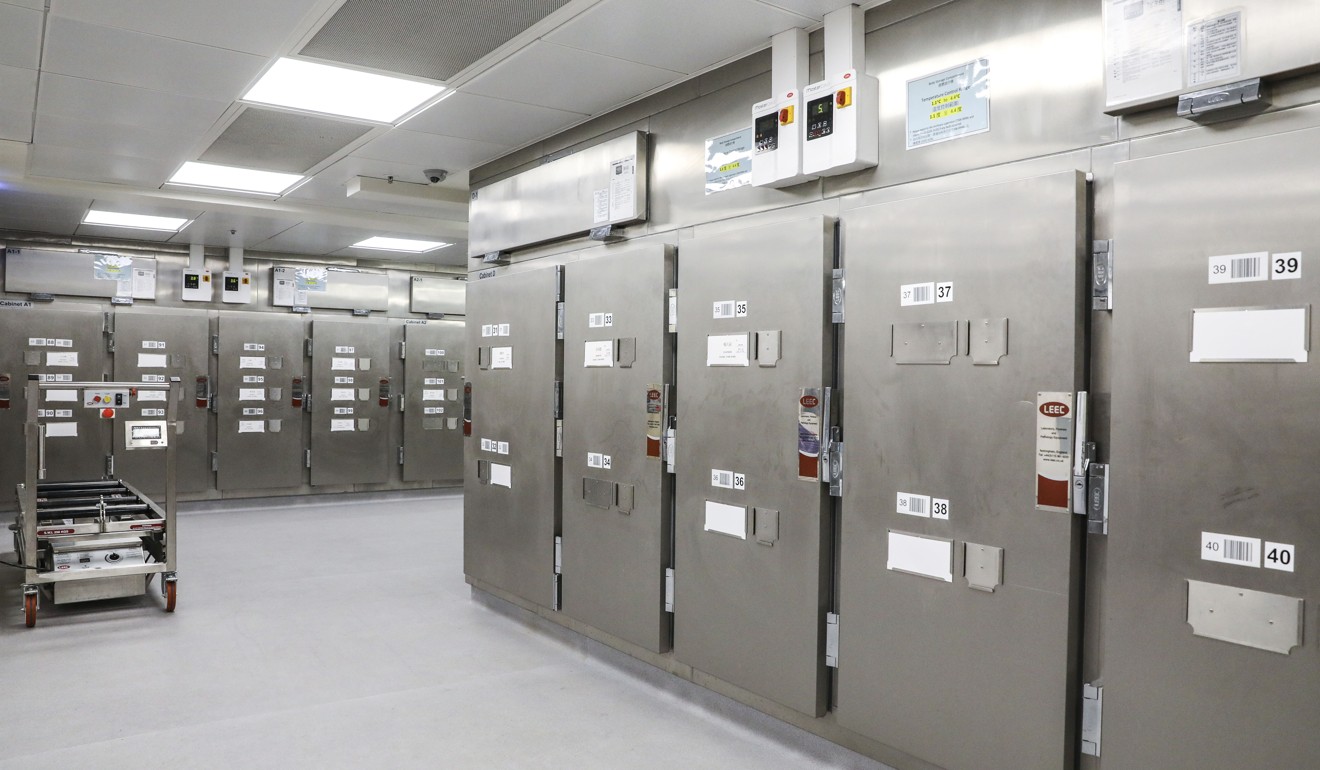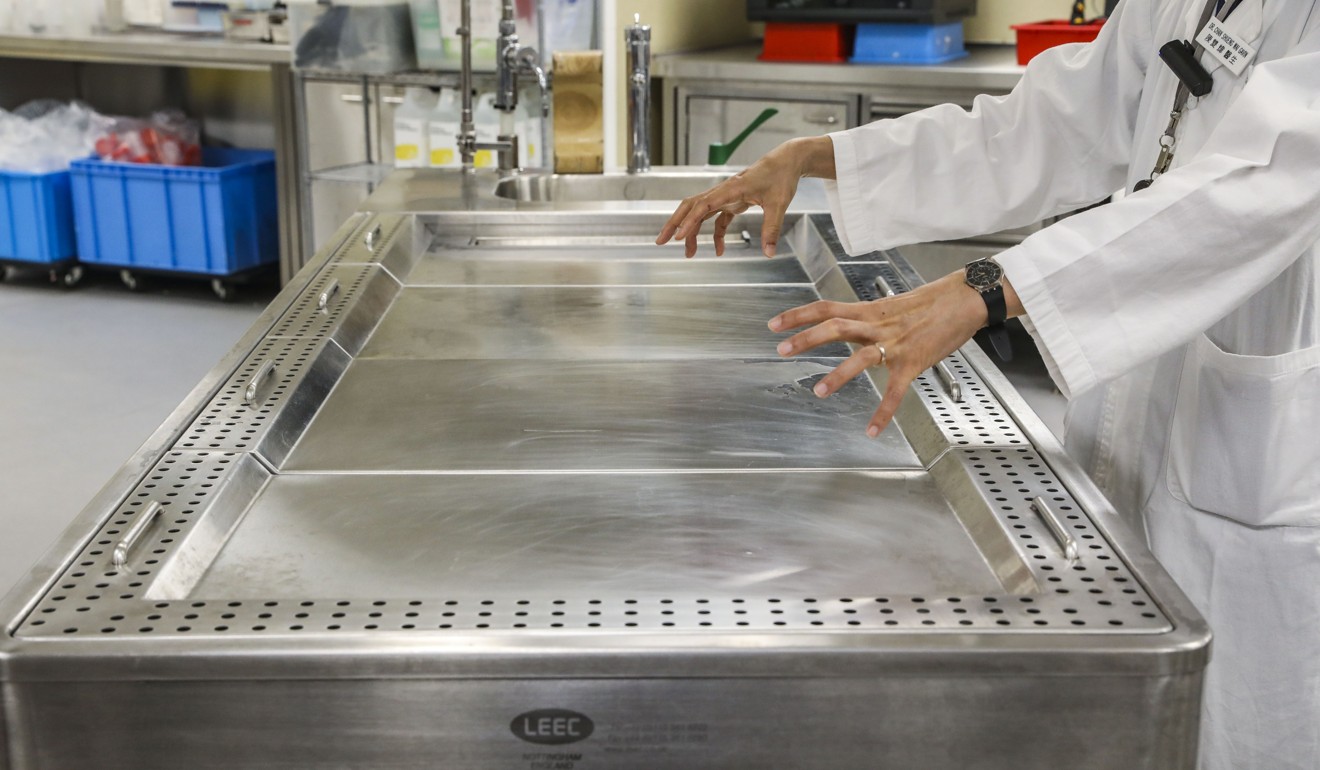
New mortuary facility at Hong Kong’s Queen Mary Hospital seeks to help the bereaved find peace
Change is part of hospital redevelopment project to meet increasing demand on health care services
To better serve Hongkongers who have lost loved ones, Queen Mary Hospital has built a new mortuary facility with expanded storage and upgraded technology.
Renamed the Bereavement Suite and Mortuary after moving to a new site within the hospital complex in late February, the facility, together with another one for temporary storage, can hold more than 200 bodies, up from 125 at the old site.

The waiting area, fitted with sofas of muted colours and large glass panels, is not the sombre grey room one might expect.
“The ambience gives people a feeling of home. We want to give families of the deceased a peaceful environment,” said Professor Irene Ng Lui Oi-lin, chief of service at the hospital’s department of pathology.
Fascination with death inspired Hongkonger’s career switch providing funerals
Dr Luk Che-chung, the hospital’s chief executive, said improving mortuary services was a way to provide better assistance to families of the deceased. More than 2,000 patients died every year in the hospital, he said.
“If there isn’t enough space, we need to send a body to another mortuary, and this is rather unsatisfactory. What is even more unsatisfactory is placing more than one body in a storage compartment,” he said.

“We need to increase our capacity to an extent that can also meet demand during surge periods.”
The changes are part of the hospital’s redevelopment project, which aims to enhance facilities to meet the increasing demand on its health care services.

Queen Mary is the first of the city’s public hospitals to be equipped with compartments that store bodies at minus 20 degrees Celsius, of which it has four. They allow bodies to be kept for longer periods compared to ordinary compartments with storage temperatures of about 3 to 4 degrees.
While the main mortuary facility is far away from most of the wards, the hospital first stores the bodies at a temporary location near the major wards before moving them the next day.
Apart from taking care of the bodies, we also want to take care of the feelings of the bereaved
Dr Gavin Chan Shueng-wai, a consultant at the hospital’s department of pathology, said this was so the families of the deceased would not have to walk a long distance right after losing their loved ones.
He said past surveys showed more than 60 per cent of bereaved families would accompany the body all the way to the mortuary.
“Apart from taking care of the bodies, we also want to take care of the feelings of the bereaved,” Chan said.
Facilities aside, the staff are also an important part of the hospital’s mission to improve service.
Patient care assistant Nick Cheng Man-hon, 24, said he wanted to use his previous work experience in customer service to change perceptions held by some members of the public that mortuary staff were cold and indifferent.
Cheng, who holds a master’s degree in ethics and public affairs, said the social value of his work outweighed his salary.
“I think my ideals in life and contribution to society are more important,” he said. “I don’t have a fear of bodies … I think it is an honour to serve the deceased.”

